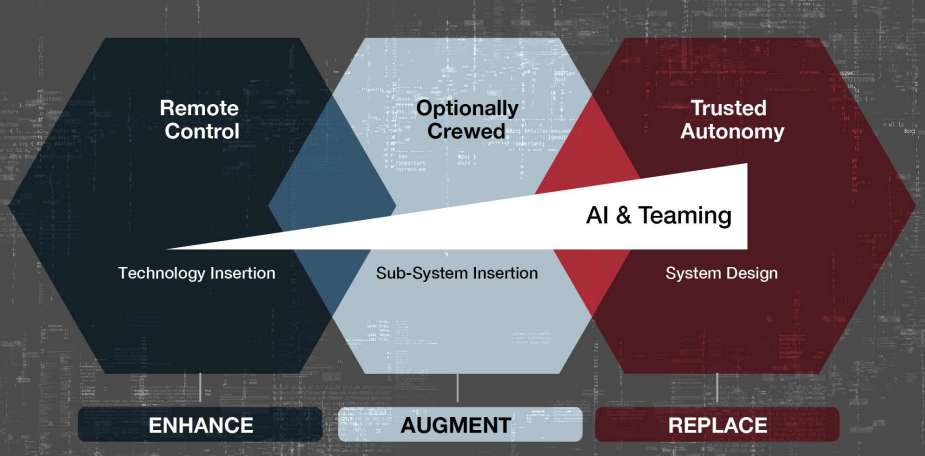Hanwha Defense Australia working with Army’s robotics office
Recently, Hanwha Defense Australia (HDA) brought together representatives from the Australian and South Korean industries to pitch to the Australian Army via the Robotic and Autonomous Systems Implementation and Coordination Office (RICO) the concept for Automated Protected Logistics to the Edge. The workshop was aimed at being platform agnostic, able to go on any Army platform both now and into the future.
Follow Army Recognition on Google News at this link

Robotic & Autonomous Systems (RAS) strategy (Picture source: Australian Army)
The 'VenomX' concept provides a platform for many of Australia's best and brightest in Defence industry to showcase their disruptive technologies. VenomX Australian partners are 4Zero Technologies, Eclips Logistics, Deakin University and Visionary Machines. This solution seeks to support various elements of the Army's Robotic and Autonomous Systems (RAS) Strategy such as:
• Generating mss and scalable effects; through teaming, swarming technologies and optionally crewed platforms.
• Efficiency; through improving logistics, maintenance, and medical effects utilising Artificial Intelligence (AI), data analytics, autonomy and leader-follower technologies.
Army’s RAS Strategy V2.0 articulates how Army aspires to leverage emerging technology such as AI, autonomy, and robotics to gain operational advantage. As one of Chief of Army's Priorities, all of us at VenomX are excited about the prospect of potential future collaboration with the Army
Robotic & Autonomous Systems (RAS) strategy
The use of advanced and networked technologies on the battlefield is increasing, and future warfighting is expected to centre on human-machine teams in both the physical and virtual sense. Army’s Robotic and Autonomous Systems (RAS) Strategy V2.0 articulates how the Army aspires to leverage emerging technology such as Artificial Intelligence (AI), autonomy, and robotics to gain operational advantage. This document builds on the first iteration of the Strategy in 2018 which led to rapid acceleration in both knowledge and demand for RAS across the Army.
RAS covers a wide range of interconnected technologies, including uncrewed systems, AI, self-learning machines, and systems more able to make sense of their environment. The increased use of RAS capabilities will continue to evolve the way the Army trains and fights – enabling increased tempo, decision-making and reducing risk. In turn, this will afford commanders new opportunities in achieving competitive advantage in some of the most dangerous tasks in the future operating environment. RAS technologies also provide significant opportunities to improve the way in which we learn, adapt and train.
The purpose of the RAS Strategy is to ensure Army can generate and maintain a combat advantage. By optimising the use of RAS capabilities, we can determine the best ways to team with machines and systems. Of particular importance will be systems that can improve the speed and accuracy of decision-making to generate tempo This will require imagination and a clear understanding of risk. Our modernisation processes will need to be more agile to best leverage the velocity and scale of technological developments.
This presents a range of options to enhance, augment, or replace those capabilities currently in service or under development. Army will need to continue managing the productive tension between being simultaneously Ready Now and Future Ready. RAS will create opportunity to influence concepts, doctrine and force design.
Defense News August 2023


























